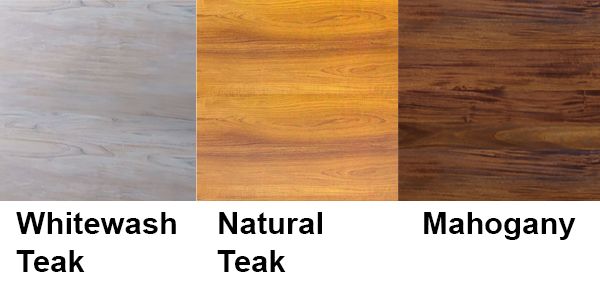
HANDCRAFTED WOOD TUBS INFORMATION
All of our handcrafted wood tubs undergo an intense, extremely comprehensive production process. We want to share a bit of information regarding this to reveal the pride taken during every stage of preparation.
The tubs are assembled in several rounds and fitted together with hand-cut dovetail joints. These powerful joints (linked with a high-end epoxy glue) withstand the impact of filling the tub with water.
Each tub’s floor is a separate panel installed once the main body has already been assembled. The floors are carved in such a way to enable water drainage. Next, the base gets attached, which helps hold the floor in place via multiple screws driven into the sides.
An astonishing six coats of finish is applied to the tub, along with a specially formulated primer. A liquid rubber compound typically found on the teak decks of yachts and other high-end crafts concludes the custom-made procedure.
Available Finishes

MAINTENANCE/GENERAL FACTS
The polyurethane finish administered to the wood forms a bond, making the tub almost waterproof. Thus, these tubs resist normal soaps, shampoos and commonplace bathroom accessories.
Cleaning these tubs normally requires only soap, water and a sponge (or cloth). If any area requires extra attention, a plastic bristled scrub brush suffices.
We do recommend against using abrasive/caustic cleaning products as they damage or remove the lacquer. Even if this occurs, coats of lacquer inside the wood will continue to protect the tub. However, sometimes color differences or patchiness in the finish can result. Normally applying a paste furniture wax conceals the damage.
These tubs do patina throughout time, similar to other wood furniture. Typically, the most noticeable change will be a darkening and changing of the color. The speed of these changes hinges on the degree of exposure to light (especially sunlight).
The natural teak tub will be most susceptible to this patina; the color will become deeper and more of a brown/orange hue (not unlike other teak furniture). The whitewash teak undergoes almost no change but will likely darken slightly after approximately 10 or more years. The mahogany wood darkens gradually as well but you won’t notice this since the stain is already dark.
Close Up of Dovetail Joints

